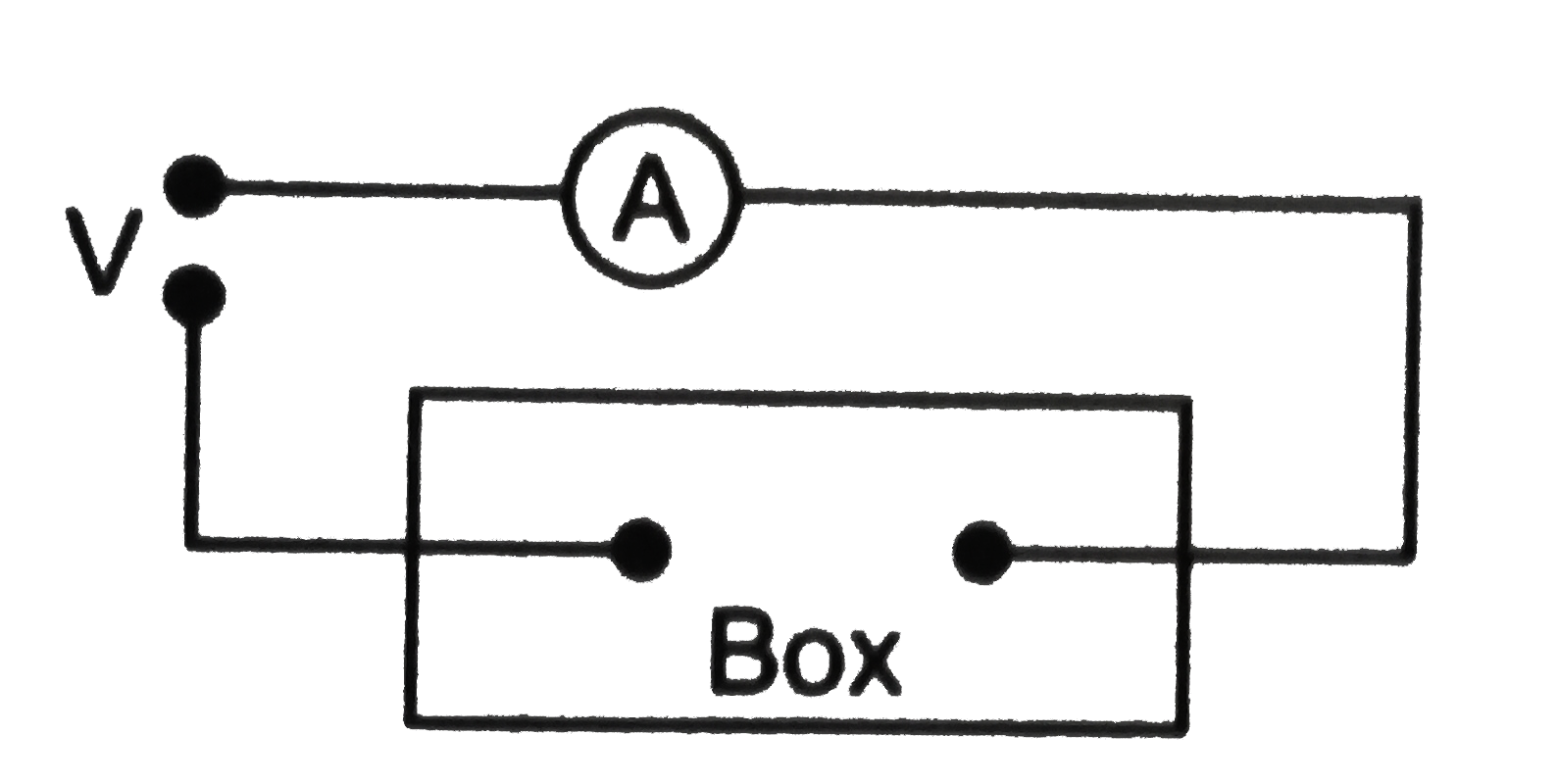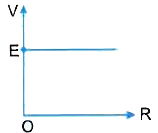A semiconductor diode and a resistor of constant resistance are connected in some way inside a box having two external terminals. When a potential difference V of 1V is applied, 1=25mA. If potential difference is reversed, I=50mA. Forward resistance and diode resistance are

40Ω,20Ω
40Ω and 40Ω
0Ω,∞
6Ω,12Ω
The correct Answer is:B
When a diode is reverse-biased, the diode does not conduct. So, if the resistor and diode are it series, then the current should be zero in one of the two given cases. But this is not the case. So, clearly, the two are connected in parallel. Clearly, I=−25mA corresponds to reverse-biasing
Now R=1V25×10−3A=100025Ω=40Ω
Again, I=50mA
Now, current shall flow through the diode also because diode is forward-baised.
If Rp is the combined resistance of diode and resistor,
then Rp=150×10−3Ω=10050Ω=20Ω
clearly, it is a parallel combination of 40Ω and 40Ω.
Topper's Solved these Questions
- SEMICONDUCTOR ELECTRONICSBOOK - A2ZCHAPTER - SEMICONDUCTOR ELECTRONICSEXERCISE - Section B - Assertion Reasoning
22 Videos
- SEMICONDUCTOR ELECTRONICSBOOK - A2ZCHAPTER - SEMICONDUCTOR ELECTRONICSEXERCISE - AIPMT/NEET Questions
77 Videos
- SEMICONDUCTOR ELECTRONICSBOOK - A2ZCHAPTER - SEMICONDUCTOR ELECTRONICSEXERCISE - Digital Electronics
40 Videos
- NUCLEAR PHYSICSBOOK - A2ZCHAPTER - NUCLEAR PHYSICSEXERCISE - Section D - Chapter End Test
29 Videos
- SOURCE AND EFFECT OF MAGNETIC FIELDBOOK - A2ZCHAPTER - SOURCE AND EFFECT OF MAGNETIC FIELDEXERCISE - Section D - Chapter End Test
30 Videos
Similar Questions
A cell of emf ε and internal resistance (r) is connected in series with an external resistance (nr) then the ratio of the terminal potential difference to emf is:
View SolutionA potential difference of 100 V is applied across a wire of resistance 50 Ω for one minute. Find the heat produced in joule.
View Solution
Knowledge Check
A cell of e.mf. E and internal resistance r is connected in series with an external resistance nr. Then, the ratio of the terminal potential difference to E.M.F.is
A(1n)B1(n+1)Cn(n+1)D(n+1)nA cell of emf (E) and internal resistance r is connected across a variable external resistance . R. The graph of terminal potential difference V as a function of R is
A B
B C
C D
D
A 2-A current flows through a resistor when a potential difference of 20 V is applied across it. The resistance of the resistor is
A2ΩB1ΩC10ΩD20Ω
Cell having an emfε internal resistance r is connected a variable external resistance R As the resistance R is increased the piot of potential difference V across R is given by
View SolutionA cell having an emf ε and internal resistance r is connected across a variable external resistance R. As the resistance R is increased, the plot of potential difference V across R is given by:
View Solution2A cell having an emf ε and internal resistance r is connected across a variable external resistance R. As the resistance R is increased, the plot of potential difference V across R is given by
View SolutionA cell having an emf E and internal resistance r is connected across a variable external resistance R. As the resistance R is increased, the plot of potential difference V across R is given by
View SolutionThe emf of a cell is 2 V. When the terminals of the cell is connected to a resistance 4Ω. The potential difference across the terminals, if internal resistance of cell is 1Ω is
View Solution
